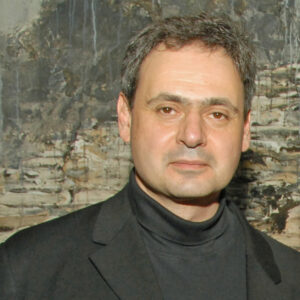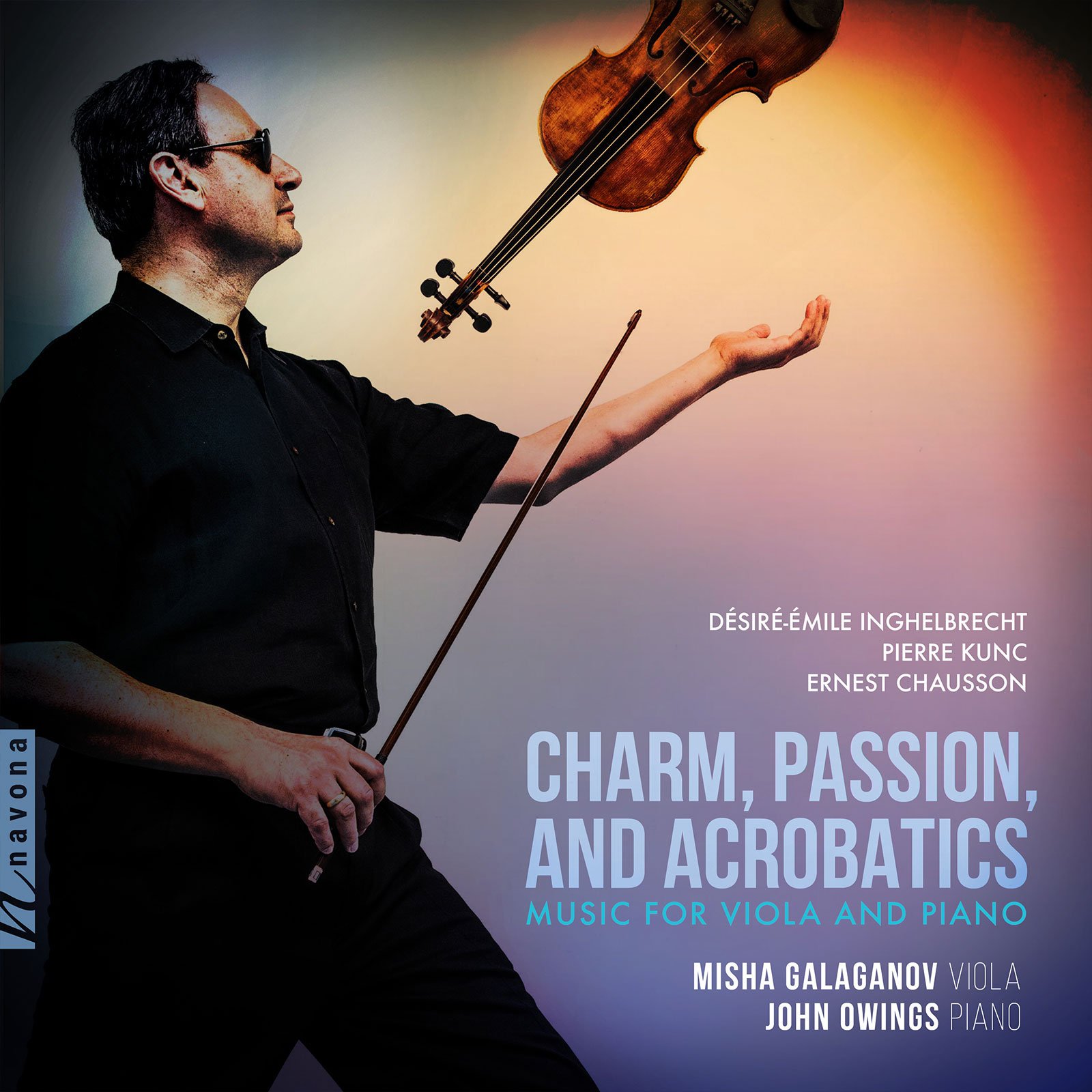Charm, Passion, And Acrobatics
Désiré-Émile Inghelbrecht composer
Pierre Kunc composer
Ernest Chausson composer
Misha Galaganov viola
John Owings piano
The story of Misha Galaganov’s CHARM, PASSION, AND ACROBATICS began when the artist uncovered a trove of forgotten, 19th century viola music in a private library. The music on this album from composers Pierre Kunc, Désiré-Émile Inghelbrecht, and Ernest Chausson has long gone unplayed; Kunc’s musical manuscripts, for example, were kept under lock and key by the Society of Authors, Composers and Publishers of Music until 2021. Featuring challenging virtuosic pieces alongside expressive, impressionistic masterworks, this album celebrates the boundless potential of the viola. The music transports the listener to a French salon of the Belle Époque, guided by Galaganov and Owings’ sensitive and technically-masterful performances.
Listen
Track Listing & Credits
| # | Title | Composer | Performer | |
|---|---|---|---|---|
| 01 | Nocturne for Cello (or Viola) and Piano | Désiré-Émile Inghelbrecht | Misha Galaganov, viola; John Owings, piano | 4:10 |
| 02 | Sonata For Viola And Piano: I. Très modére; Animé mais pas trop | Pierre Kunc | Misha Galaganov, viola; John Owings, piano | 15:22 |
| 03 | Sonata For Viola And Piano: II. Intermède “Schumann” | Pierre Kunc | Misha Galaganov, viola; John Owings, piano | 3:36 |
| 04 | Sonata For Viola And Piano: III. Très lent | Pierre Kunc | Misha Galaganov, viola; John Owings, piano | 7:36 |
| 05 | Sonata For Viola And Piano: IV. Assez animé | Pierre Kunc | Misha Galaganov, viola; John Owings, piano | 8:42 |
| 06 | Prélude et Saltarelle | Désiré-Émile Inghelbrecht | Misha Galaganov, viola; John Owings, piano | 6:01 |
| 07 | Impromptu | Désiré-Émile Inghelbrecht | Misha Galaganov, viola; John Owings, piano | 6:03 |
| 08 | Rapsodie for Viola and Piano: Fêtes - Recueillement – Danses |
Pierre Kunc | Misha Galaganov, viola; John Owings, piano | 11:04 |
| 09 | Piece for Cello (or Viola or Violin) and Piano, Op. 39 |
Ernest Chausson | Misha Galaganov, viola; John Owings, piano | 7:25 |
Recorded March 11 – 16, 2018 at PepsiCo Recital Hall, Texas Christian University in Fort Worth TX
Recording Session Producer and Engineer Scott Probst
Editing and Mixing Jim Jackson
Cover photo Jack Settle
Executive Producer Bob Lord
Executive A&R Sam Renshaw
A&R Director Brandon MacNeil
VP of Production Jan Košulič
Audio Director Lucas Paquette
VP, Design & Marketing Brett Picknell
Art Director Ryan Harrison
Design Edward A. Fleming
Publicity Patrick Niland, Aidan Curran
Content Manager Sara Warner
Artist Information

Misha Galaganov
Dr. Mikhail “Misha” Galaganov is Professor of Viola and Chair of Strings at Texas Christian University (TCU). As a soloist and chamber musician he has premiered more than 30 compositions for viola alone, viola with piano, and viola in chamber music, written for him by composers from Israel, Russia, Mexico, Peru, Belgium, Italy, Uruguay, and the United States. He also premiered his own arrangement of the 12 Fantasies for Bass Viol by Georg Philipp Telemann on viola — the first live performance of all bass viola fantasies on viola in one concert. As Principal Viola of the Dallas Chamber Symphony, Galaganov has premiered several pieces written for a small symphony orchestra and for string chamber ensembles.

John Owings
Praised for his exciting pianism and sensitive artistry, John Owings’ versatile career has ranged from solo and chamber music recitals to concerto appearances in major cities in the United States, Latin America, Europe, and Asia. His critically acclaimed albums include piano music by Samuel Barber, Aaron Copland, Elliott Carter, Robert Casadesus, and Julius Reubke, as well as chamber music by Eric Ewazen, Richard Lavenda, Quincy Porter, and Elena Sokolowski.
Notes
The idea for this recording project started with the acquisition of a collection of sheet music, scores, and books from the library of Armand Pushman, brother of the famous artist Hovsep Pushman. Armand played viola and studied in the Paris Conservatory, France with a renowned pedagogue, Maurice Vieux. Pushman’s library included many compositions featuring viola that are now largely forgotten. I was excited to discover these undeservingly-obscure viola compositions, and I hope that the album will inspire you to seek and perform the pieces featured here.
— Misha Galaganov

